Quite a few large groups at this year’s festival: Abram Wilson’s large Ride! Ferris Wheel… group on Sunday evening, and two ‘proper’ big bands: the Mingus Big Band (performing here at the mid-point of their UK tour) on the Friday, and Stan Tracey’s (more traditional) big band filling the ruins’ marquee on the Saturday night.
The Mingus Big Band
» Ryan Kisor, Kenny Rampto, Alex Sipiagin (trumpets), Wayne Escoffery, Craig Handy, Vincent Herring, Abraham Burton, Lauren Sevian, Ronnie Cuber (saxes), Ku-umba Frank Lacy, Conrad Herwig, Earl McIntyre (trombones), Johnathan Blake (drums), Boris Kozlov (bass), Kenny Drew Jr. (piano) «
The Friday became, in fact, something of a Charles Mingus extravaganza, starting with a showing of the decently arty Charles Mingus – Triumph of the Underdog; a film that, as much as possible, tries to convey the man behind the music rather than give the biographical back-story as a history lesson. The last bit gets a bit eulogistic, and seems to turn into a promotional film for Epitaph, but there’s some killer footage (including some wicked stuff with Eric Dolphy), and it’d definitely be worth your while digging out (YouTube, cough). Also solid of the festival to bother putting it on… It’s good to have this sort of thing to help break up the solid continuation of music a bit, but also good to set the main performance (which immediately followed this presentation) in context…
The Mingus Big Band—originally established in 1991, and operating with ‘artistic direction’ from Charles’ surviving wife, Sue Mingus—currently holds a solid residency at NY’s Iridium club, but has just finished touring the UK (and only for the first time, apparently). It’s playing classic Mingus music, arranged for a 3 trumpet, 5 sax, 3 trombone, and rhythm section group drawn out of a larger pool of regular working musicians. Unfortunately, for me, the music didn’t really live up to the (probably justified) hype. The sound was a bit too generic, and the arrangements actually seemed pretty conservative… Although they were playing the standard Mingus tunes, there didn’t seem to be, identifiably, any of the solid Mingus ‘sound’. That’s not necessarily a bad thing, if they’re making their own thing rather than play blind copy-cat homage to his own tradition. In practise, however, the arrangements all came out a bit flat; they were full and dense, but the scope of the band seemed too limiting; the doubling up of instruments seemed to cloud everything into a murky mess, the horns just bleeding into one another. Compounded by a relentlessness and a lack of real dynamics—no real ‘light and shade’—this left the music, for me, fairly impenetrable. I think it’d be a lot better with just a smaller group, maybe an octet or something… Is that the sort of thing Mingus originally tended to write for? Just something to make it a bit more transparent, because there were some brilliant musicians, and there was a great slab of swing rocking back and forth underneath the fog… Wayne Escoffery played some pretty solid solos, with lead trombonist Conrad Herwig the most humble and thoughtful contributor. The rhythm section itself was killer; Boris Kozlov on bass duties (and, according to Alyn Shipton, possibly using one of Mingus’ old instruments) played great personal lines throughout, and there was empathy with powerhouse Johnathan Blake on drums… The final piece of the night rounded off with an extended bass/drum conversational workout which was absolutely worth the ticket price alone…
Cameron Pierre Trio
With Mingus still ringing in my ears, I ran off to catch the end of Cameron Pierre‘s gig at the canal basin’s Taylor John’s House.
» Cameron Pierre (guitar), Anders Olinder (hammond organ), Rod Youngs (drums) «
It was a pretty interesting contrast to the Mingus group because, although the trio was essentially pretty straight up and down not-quite-standards, I found it all a lot more infectously engaging. Pierre was all great winding, heavily vocal, articulate lines. Anders Olinder played great tight, effortlessly matter-of-fact organ lines, and Rod Youngs brought it all together with sensitive drums… Doesn’t have to be complicated!
Stan Tracey Big Band
» Stan Tracey (piano), Nathan Bray, Mark Armstrong, Guy Barker, Henry Lowther (trumpets), Mark Nightingale, Andy Wood, Alistair White (trombones), Nigel Hitchcock, Simon Allen, Brandon Allen, Mornington Lockett, Alan Barnes (saxophones), Andrew Cleyndert (bass), Clark Tracey (drums) «
I had previously seen Stan Tracey in trio format (with Cleyndert and Clark Tracey) ‘supporting’ Wayne Shorter at the Barbican, last year, but wasn’t really overwhelmed. This big band—retaining that same trio as a rhythmic core—was much more invigorating. A hot selection of pieces, some Ellington stuff, Epistrophy and other Monk workings, but covering a range of moods, from hot swing to thoughtful ballads. Nice soloing from Alan Barnes and Mornington Lockett, Guy Barker too, off-hand fluid movements, but lines that strode through the beefy arrangements; clear and definite. Andrew Cleyndert’s bass was particularly fulsome. Even though this is a band working within fairly well-defined territory, and even with the standard big band cliches all present and correct, pasted in to all the right places, it came over much more successfully than the Mingus band… Even if only in terms of clarity. Though I actually first formed interest in jazz music through listening to my grandparents’ big band recordings, once John Coltrane had been discovered, I pushed ‘big band’ away, tired of the cliches and too-slick arrangements. But hearing this powerful band live I think I might have to reappraise that prejudice. Although, I think live is the key, and I’m not sure it could necessarily preserve the fire on tape.
Seeing this has also taught me to reappraise my prejudice against the Godfather himself. At the Barbican, the trio sounded stodgy, clumpy and as cold as granite. On record: Under Milk Wood is good for Starless and Bible Black, but the rest of it seemed too cold and lifeless, melody by numbers and rock hard. But in the context of this (much) larger group, I really liked Tracey’s piano playing; it’s sort of minimalist in a partly Duke Ellington sort of way, almost monophonic, but here it underlined and texturalised the band in a sound that was very profound.
As I snook out at 10 o’clock, to make way to see Polar Bear, the band were still playing through their final suite. The strains and echoes of their sound were bouncing around the cathedral complex, and it sounded so marvelously majestic it was really quite beautiful… Definitely a group that anyone should go out and see, even if you have the same prejudices as me…
Postscript: John Evans has a slightly better review of this gig at Jazz Groove




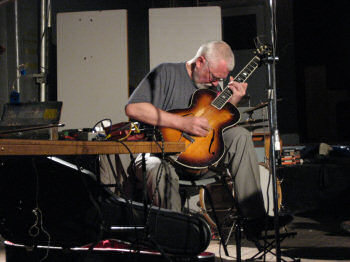




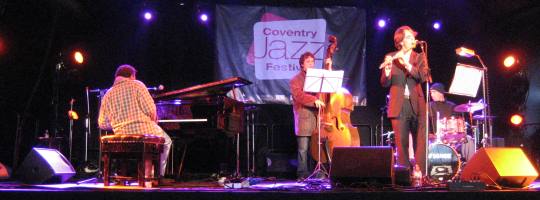

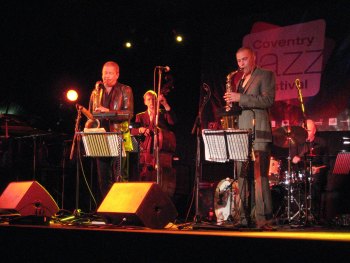


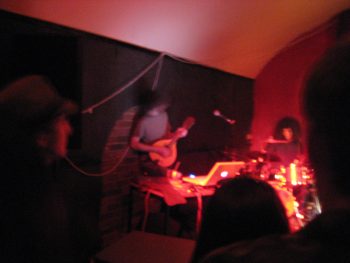
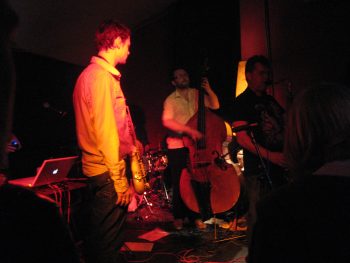

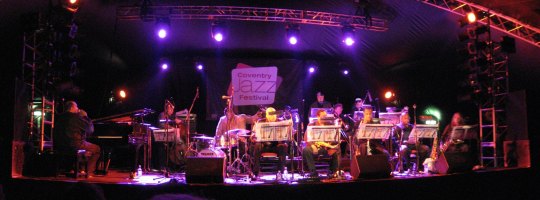
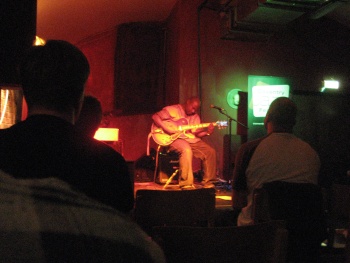
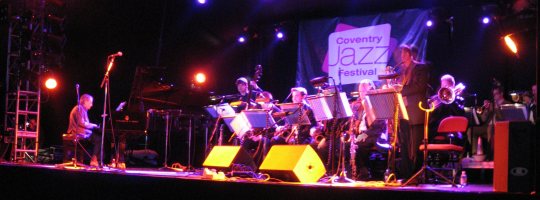
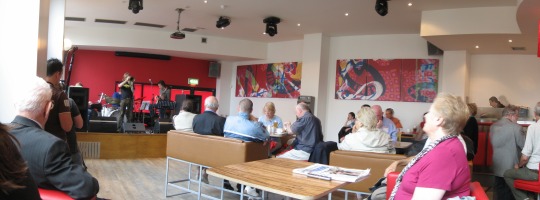

 RSS Feed
RSS Feed